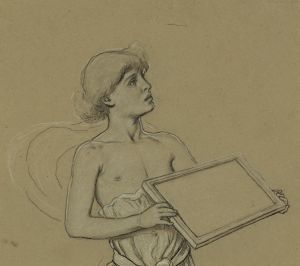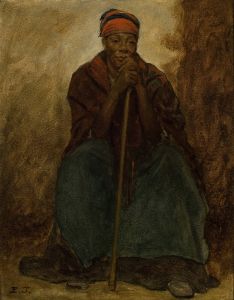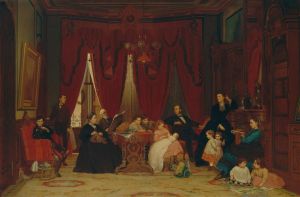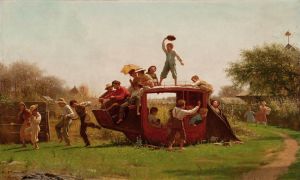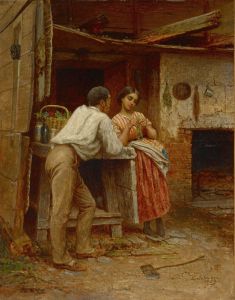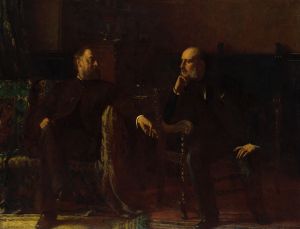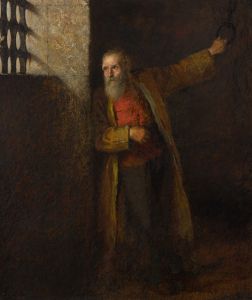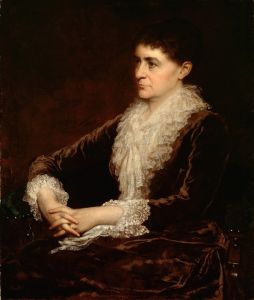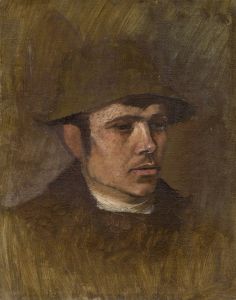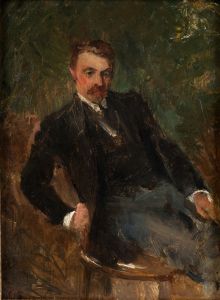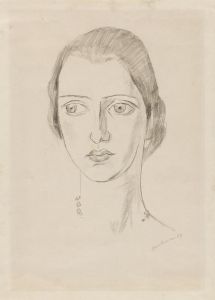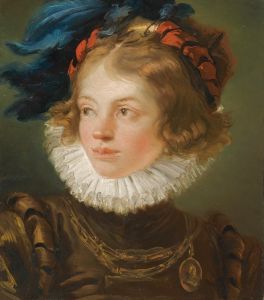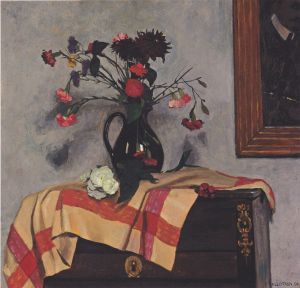
Samuel W. Rowse
A hand-painted replica of Eastman Johnson’s masterpiece Samuel W. Rowse, meticulously crafted by professional artists to capture the true essence of the original. Each piece is created with museum-quality canvas and rare mineral pigments, carefully painted by experienced artists with delicate brushstrokes and rich, layered colors to perfectly recreate the texture of the original artwork. Unlike machine-printed reproductions, this hand-painted version brings the painting to life, infused with the artist’s emotions and skill in every stroke. Whether for personal collection or home decoration, it instantly elevates the artistic atmosphere of any space.
Eastman Johnson, an influential American painter and co-founder of the Metropolitan Museum of Art, is renowned for his genre scenes and portraits that capture the essence of 19th-century American life. Among his numerous works, the portrait of Samuel W. Rowse stands out as a testament to his skill in capturing the character and presence of his subjects.
Samuel Worcester Rowse (1822–1901) was an American artist known primarily for his work as an illustrator and lithographer. He gained recognition for his detailed and expressive drawings, which were often used in publications and as standalone pieces of art. Rowse's most famous work is arguably the "Cruikshank's Drawing," a portrait of a young girl that became widely popular in the 19th century.
Eastman Johnson's portrait of Samuel W. Rowse is a fine example of his portraiture, which often focused on capturing the personality and status of his subjects. Johnson's portraits are noted for their realism and attention to detail, characteristics that are evident in his depiction of Rowse. The painting is believed to have been created during a period when both artists were active in the New York art scene, a hub for creative exchange and collaboration during the mid to late 1800s.
In the portrait, Johnson employs his characteristic style, which combines a keen observation of detail with a warm, naturalistic palette. This approach not only highlights Rowse's physical features but also suggests his intellectual and artistic demeanor. Johnson's ability to convey the inner life of his subjects through subtle expressions and thoughtful composition is evident in this work.
The relationship between Johnson and Rowse, while not extensively documented, can be inferred through their mutual involvement in the art community of the time. Both artists were part of a network of painters, illustrators, and patrons who contributed to the burgeoning American art scene. This environment fostered collaborations and friendships, likely providing the context for Johnson's portrait of Rowse.
Johnson's work, including the portrait of Samuel W. Rowse, is significant for its contribution to the development of American art. His portraits are appreciated not only for their aesthetic qualities but also for their historical value, offering insights into the people and culture of 19th-century America. The portrait of Rowse, like many of Johnson's works, serves as a visual document of the era, reflecting the styles, interests, and social dynamics of the time.
While specific details about the commission or creation of the portrait of Samuel W. Rowse by Eastman Johnson are limited, the painting remains an important piece within Johnson's oeuvre. It exemplifies his mastery in portraiture and his ability to capture the essence of his subjects, contributing to his legacy as one of America's foremost portrait artists of the 19th century.






